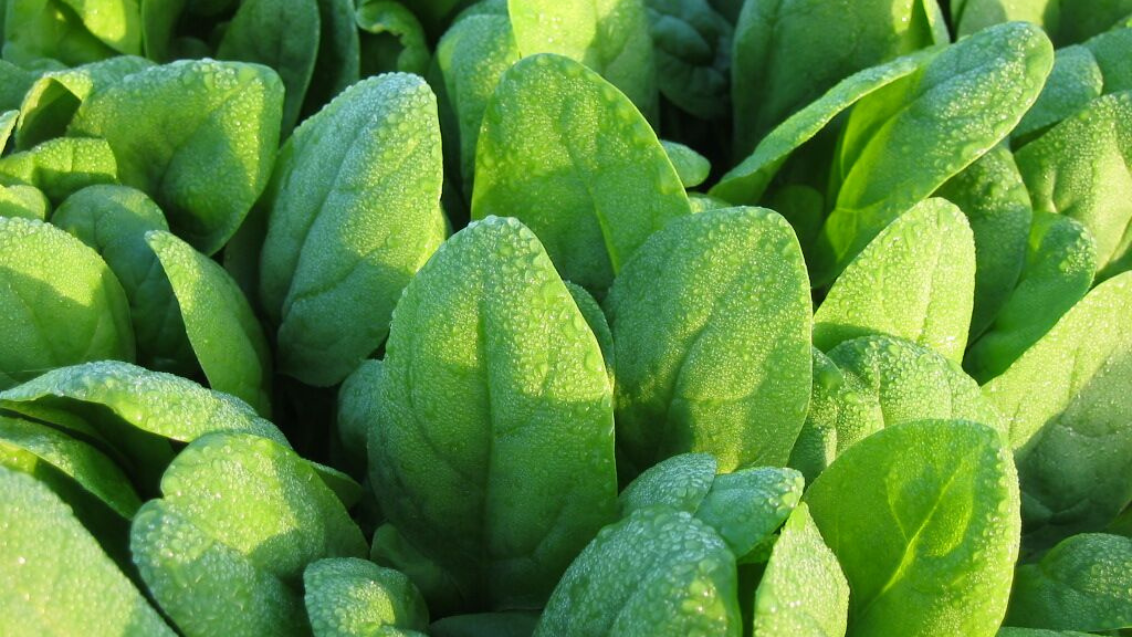January 17, 2024

Spinach diseases not only cause imperfections, they also damage a plant’s ability to photosynthesize, which hurts yield potential and decreases the overall product quality. Peronospora, or downy mildew, is often considered one of the most damaging spinach diseases. Recent testing has also shown Stemphylium to be a rising threat to spinach growers.
“We work to find solutions for baby leaf, bunching, and processing markets,” said Yoann Barrier, Syngenta Vegetable Seeds Regional Portfolio Manager-Leafy and Brassica. “This is to help growers have varieties with extremely nice performance in the field and also that have the highest resistance package we can provide against disease.”
There are fewer in-season controls available to combat these diseases. That’s why researchers at Syngenta Vegetable Seeds stay ahead of new races of diseases by testing varieties in growing conditions around the globe. As new races of pests and disease emerge, disease resistant spinach varieties from Syngenta Vegetable Seeds are updated just as frequently to give growers the protection they need.
In addition to planting resistant varieties, understanding the conditions for development and identifying these diseases are the best ways to prevent yield loss.
Conditions for Development and Spread of Peronospora and Stemphylium
Whether it’s Peronospora or Stemphylium, the imperfections caused by pests in spinach fields can hurt the plant’s ability to photo synthesize, decrease yield quality, and diminish overall yield potential. Discover how to differentiate the diseases:
Peronospora symptoms include:
- Dull to bright yellow spots on leaves that can enlarge and become tan and dry over time. The underside of the leaf can reveal purple growth from the fungus and in more severe infections, leaves can curl and distort.
Stemphylium is characterized by:
- Leaves with small circular to oval, gray-green spots. As the disease progresses, the spots enlarge (still keeping the circular to oval shape) and turn tan in color before drying out. This bacteria does not showcase any purpling or other fungal growth because it is not a fungal infection.
“Downy mildew is one of those traits where not having a resistance trait just isn’t an option,” said Michel de Lange, Syngenta Vegetable Seeds Trait Development Lead. “It can completely destroy yields and growers just can’t afford to take that kind of risk."
Finding new resistant varieties as the races of disease continue to develop is a complex process that requires constant monitoring and testing.
How to Identify Peronospora and Stemphylium
Monitor plants for symptoms of downy mildew at least once a week, according to Cornell University. Look for signs of an initial infection, which will appear as dull to bright yellow spots on cotyledons. It’s best to check in the early morning, and monitor leaves of all ages.
Over time, spots will get larger, dry out, and turn tan. Inspect the underside of leaves for a purple fungus growth. It’s also important to monitory for multiple infection sites of extensive disease development which may lead to curled leaves and a potential for blight.
The symptoms of Stemphylium may resemble tan spots caused by pesticide or fertilizer damage, says the University of California. The initial symptoms will appear as 0.13 to 0.25 inch diameter circular or oval grey-green spots. Disease progression will enlarge the spots and turn them tan. Older spots will become papery and dry up. Stemphylium can be differentiated from other fungal diseases due to its lack of purple growth like in downy mildew or green spores like in Cladosporium leaf spot.
Keeping up with the latest evolutions of these diseases across a variety of crops in a multitude of growing conditions is how Syngenta Vegetable Seeds continues to provide innovations that matter to growers.
Stay up to date on the latest innovations in leafy vegetables here to understand how to protect crops from diseases and other yield-robbing pests.